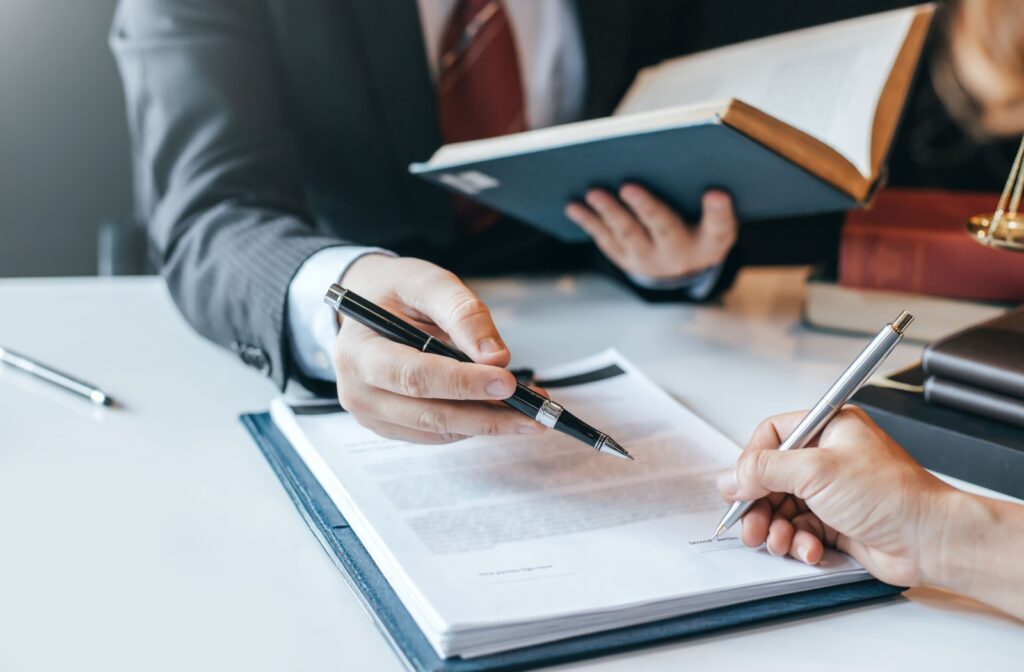Many Albertans face financial hardships, and filing for bankruptcy can seem like a tempting solution. Understanding Alberta’s bankruptcy laws and the potential pros and cons involved can help you understand the process and determine whether it might be the right path for you.
Bankruptcy is a legal process designed to offer relief to individuals who are unable to repay their debts. In Alberta, filing for bankruptcy can provide a fresh start by eliminating most of your unsecured debts. However, it also comes with certain responsibilities and potential consequences that must be understood.
Key Takeaways
- Fresh Start—Bankruptcy can eliminate most unsecured debts but stays on your credit report for 6–7 years.
- Eligibility—You must owe $1,000+ in unsecured debt, be unable to pay, and live or own property in Canada.
- Process & Responsibilities—Work with a Licensed Insolvency Trustee, notify creditors, attend financial counseling, and make required income contributions.
- Asset Protection & Recovery—Certain assets are exempt, and you can rebuild credit through responsible financial practices; alternatives like consumer proposals may also be available.
Fresh Start or Financial Nightmare?
Bankruptcy can be a lifeline for those drowning in debt, as it provides a structured way to deal with insurmountable financial obligations. But while bankruptcy offers a fresh start, it is also important to recognize the challenges involved with the process.
One of the primary challenges of filing for bankruptcy is the severe impact that it can have on your credit score. A bankruptcy filing remains on your credit report for a significant period, making it challenging to access credit in the future.
As such, it is crucial for anyone considering bankruptcy to weigh the benefits of debt relief against the potential consequences and to seek professional advice in order to be able to make an informed decision about the best course of action for your financial situation.
How Does Bankruptcy Work in Alberta?
In Alberta, bankruptcy is governed by the federal Bankruptcy and Insolvency Act, which outlines the legal framework for managing insolvent individuals. There are certain eligibility requirements for this process, and if you meet these, you can move on to the assessment period with a Licensed Insolvency Trustee (LIT).
Who Can File for Bankruptcy in Alberta?
Eligibility for bankruptcy in Alberta requires you to:
- Owe at least $1,000 in unsecured debt
- Be unable to meet your debt obligations as they become due
- Reside or have property in Canada
How to File for Bankruptcy in Alberta
Filing for bankruptcy involves several steps:
- Initial Assessment: Individuals considering bankruptcy typically start by consulting an LIT to assess their financial situation. The LIT evaluates the individual’s debts, assets, and income to determine if bankruptcy is the most suitable option.
- Filing for Bankruptcy: If bankruptcy is deemed the best course of action, the individual, with the assistance of the LIT, completes the necessary paperwork to file for bankruptcy. This filing initiates the legal process of resolving the individual’s debts.
- Notifying Creditors: Once the bankruptcy documents are filed, creditors are notified of the bankruptcy proceedings. This notification halts collection actions such as wage garnishments, lawsuits, or harassing phone calls from creditors.
- Asset Assessment: A thorough assessment of the individual’s assets is conducted to determine if any assets can be sold to repay creditors. In Alberta, certain assets, such as essential household items and tools of the trade, are exempt from seizure.
- Income Contributions: Depending on the individual’s income, they may be required to make monthly payments to the Trustee, which are then distributed to creditors. These payments are calculated based on a set formula that takes into account the individual’s income and expenses.
- Financial Education: As part of the bankruptcy process, individuals are often required to attend financial counselling sessions. These sessions aim to provide education on budgeting, money management, and responsible financial practices to help prevent future financial difficulties.
- Credit Report: A bankruptcy filing will appear on an individual’s credit report for a specified period, typically impacting their credit score. It is important for individuals to actively work on rebuilding their credit after bankruptcy by using secured credit cards, making timely payments, and managing their finances responsibly.
- Discharge & Fresh Start: Upon successful completion of the bankruptcy process, including fulfilling payment obligations and attending any required sessions, the individual receives a discharge. This discharge releases them from most of their debts, allowing them to start anew with a clean financial slate.
- Ongoing Support: Even after receiving a discharge from bankruptcy, individuals may benefit from ongoing financial guidance and support. Establishing healthy financial habits, setting realistic financial goals, and creating a budget can all contribute to long-term financial stability.
What Happens to Your Assets?
Some of your assets may be sold to repay creditors. However, Alberta law exempts certain assets from seizure, including:
- Personal belongings up to a specific value
- Tools of your trade
- Pension plans and certain insurance policies
Your Responsibilities During Bankruptcy
During bankruptcy, you have several obligations:
- Disclose all income and expenses to the LIT
- Attend mandatory credit counseling sessions
- Make surplus income payments if your income exceeds certain thresholds
Rebuilding Your Credit After Bankruptcy
Rebuilding credit is possible with diligent financial practices:
- Use a secured credit card responsibly
- Pay all bills on time
- Keep a low credit utilization ratio
How Long Does Bankruptcy Stay on Your Credit Report?
Bankruptcy will remain on your credit report for 6–7 years after your discharge for a first-time bankruptcy. This period will be longer for subsequent bankruptcies.
Alternatives to Bankruptcy in Alberta
Bankruptcy is not the only option available. Alternatives may include:
- Debt Consolidation: Combining multiple debts into a single loan with a lower interest rate.
- Consumer Proposals: Arranging to pay creditors a portion of what you owe over an extended period.
Consulting with an LIT can help determine the best course of action for your specific situation.
You Do Not Have to Face Bankruptcy Alone
Facing financial challenges is not easy, but with the right resources and support, you can overcome them. Taking proactive steps towards understanding bankruptcy laws, seeking professional advice, and committing to the bankruptcy process can pave the way for a fresh start and a more secure financial footing. Contact A.C. Waring & Associates today to begin your journey toward financial recovery and peace of mind.





